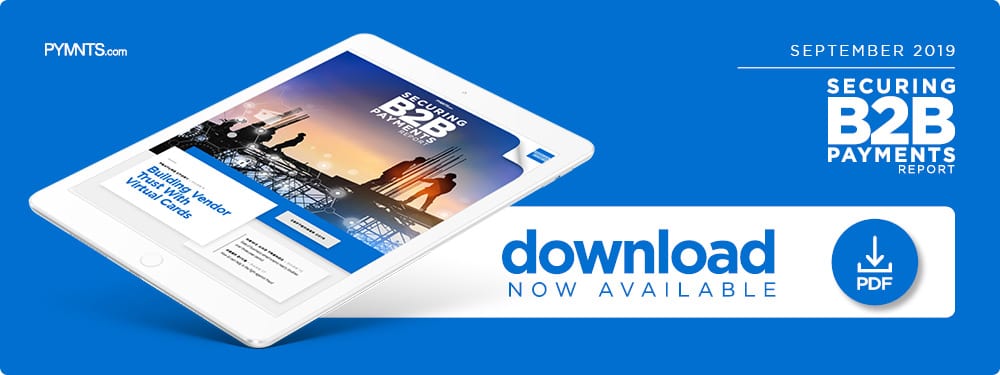Building Vendor Trust With Virtual Cards

In the $1.8T construction industry, payment delays to contractors and subcontractors can have a crippling effect on the timely completion of projects. Karin Rush and Linnet Phoenix of DPR Construction explain how virtual and purchasing card technologies keep its network of 4,800 subcontractors from avoiding financial hardship while keeping payment flows secure in the latest Securing B2B Payments Report.
The U.S. construction market is on a roll, and recent data suggests it is unlikely to slow. The market is on track to record a compound annual growth rate (CAGR) of 4.9 percent from 2019 to 2023, reaching a value of $1.8 trillion. Construction firms looking to succeed in this growing market and turn a profit must complete their projects on time, which means access to steady cash flows is crucial. Businesses that fail to make payments to suppliers or vendors in a timely fashion risk alienating partners and stalling projects.
Having the right payment tools is therefore as important as having the right trucks, saws and jackhammers. Such solutions help construction firms resolve balances while providing their business partners with crucial access to working capital. This is why some construction firms — such as Redwood City, California-based DPR Construction, which has two dozen offices in the U.S. and divisions in the Netherlands, Singapore and South Korea — have embraced offerings like virtual and purchasing cards that expedite the payment workflow.
DPR works with a vast network of subcontractors, suppliers and vendors, and making on-time payments is essential to maintaining strong relationships with these partners and keeping projects on track. PYMNTS recently spoke with Karin Rush, DPR’s leader of shared services, and Linnet Phoenix, head of corporate AP, to better understand how virtual and purchasing cards can build efficiencies in the construction market. The pair explained how these offerings keep suppliers satisfied and DPR’s partners safe from fraud.
“Virtual cards move payments quickly,” Phoenix said. “We can email a remittance advice to the vendor and they will have all the information to easily reconcile payments on their system.”
Making Virtual Cards A Reality
DPR’s vendors are presented with the option to receive payment via virtual cards once they complete the onboarding process. Approximately 30 percent to 40 percent of the company’s vendors opt in, proving the feature’s popularity.
“Checks take longer to reach vendors,” Phoenix said. “With the virtual card, they receive an email that includes all the data they need to post the payment.”
DPR has used virtual cards for five years, and their faster delivery mechanisms are likely to fuel greater uptake within the construction market.
“It’s probably the direction [that] vendors are going in,” she said. “Every time we have a new vendor, we send them the package and they have the option to choose … virtual cards or not. Most of them sign up.”
Fixing Cash Flows, Fighting Fraud
DPR works with more than 3,800 subcontractors and over 4,800 suppliers and vendors, all of which have their own payment needs and expect to get paid as quickly as possible. According to Rush, meeting these payment expectations is essential to helping them manage their cash flows.
Many subcontractors hire additional laborers who need to get paid weekly, creating problems when legacy payment methods, such as paper invoices and checks sent by mail, are used to settle payments within the established terms of the invoice.
“If we’re late, then they’re out even more cash on the front end,” Rush said. “That definitely hurts the subcontractor relationship because [it] needs that cash to keep [its] business running.”
Phoenix noted that virtual cards not only improve cash flows, but also reduce fraud vulnerabilities. The cards do not require vendors to share their banking details with DPR, meaning that information is not vulnerable to compromise. In addition, virtual card numbers can be used only once before they expire.
“It’s for a particular vendor for a particular invoice,” Phoenix said. “Once it has been used, it cannot be used again.”
Vendors that successfully process their virtual card payments are sent remittance advice notifications that include invoice details such as payment amount, purchase order and date.
These solutions have helped DPR better understand how much capital it has on hand. Having better insight into the company’s cash flow presents new opportunities for savings, such as reduced spending on expedited deliveries.
“It reduced our FedEx expenses because if we needed to get an urgent payment out to a vendor, sometimes we [would] have to overnight the checks,” Phoenix said.
Rush echoed the sentiment that virtual cards provide a win-win for both DPR and its network of suppliers.
“[Our cash flow] is more predictable,” Rush said. “We know when payments are received because they’re gone when we send them. For suppliers, they get their money faster. It’s faster than ACH.”
Putting Cards To Work
Virtual card technology is not the only card-based solution DPR uses to streamline operations and maintain a steady cash flow. The company also issues purchasing cards that enable DPR’s staff who work at different construction sites to more easily make work-related purchases.
“These are for small … purchases,” Phoenix said. “If one of the job’s team members has to pick up an item at Home Depot, it’s easy for them to go in, pick up and pay for the item right then and there, instead of creating a charge on an account or an invoice.”
These tools also help workers on the company’s back end, as DPR’s AP department does not have to review invoices for expenses.
“Accounts payable is able to focus on other areas and the jobs team is able to have [the items] they need immediately,” Phoenix said.
Such solutions enable DPR’s staff to focus on their own tasks in the field. The global nature of the company’s operations requires many staff members to travel to new cities and job sites, Rush noted. Purchasing cards enable all of the company’s professionals — including temporary workers or employees assigned to field-based roles — to pay for a variety of travel-related expenses.
“They can use their [purchasing] cards to pay for plane tickets or meals, incidental things of that nature,” Rush said. “It makes [things] easier because they don’t have to use their personal cards.”
Such offerings are essential for the construction market to maintain its momentum, and the right payment solutions could prove to be as valuable as any tool in a construction worker’s toolbox.
